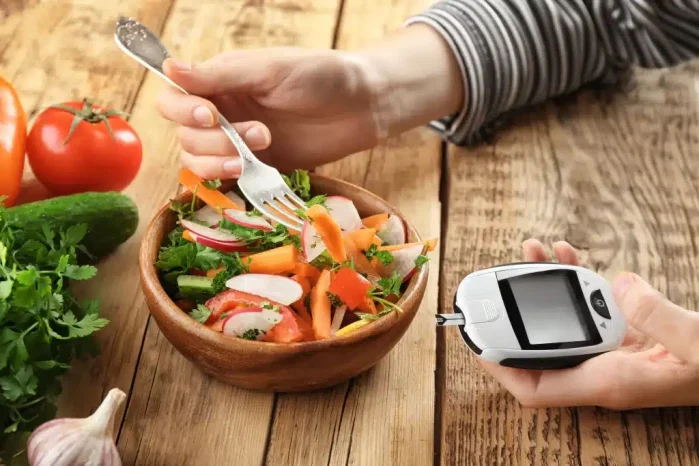Living with diabetes requires careful attention to diet, with particular consideration given to managing blood sugar levels. While fruits are often touted as essential components of a healthy diet, their natural sugars can pose challenges for individuals with diabetes. However, not all fruits are created equal when it comes to sugar content. In this article, we will delve into the realm of low sugar fruits, exploring their benefits for diabetes management, nutritional values, portion sizes, health benefits, preparation tips, potential interactions with medications, and the importance of consulting healthcare providers for personalized dietary guidance.
Explanation of Glycemic Index (GI): Define GI and explain why low-GI fruits are beneficial for people with diabetes
The Glycemic Index (GI) is a numerical ranking system that classifies carbohydrates based on their impact on blood sugar levels after consumption. Foods with a high GI are rapidly digested and cause a sharp increase in blood sugar levels, while those with a low GI are digested more slowly, resulting in a more gradual rise in blood sugar. For individuals with diabetes, opting for low-GI foods can help maintain more stable blood sugar levels and reduce the risk of spikes and crashes.
Low-GI fruits are particularly advantageous for people with diabetes because they provide essential nutrients without causing significant fluctuations in blood sugar. By choosing fruits with a low GI, individuals can enjoy the health benefits of fruits while better managing their diabetes. Incorporating low-GI fruits into meals and snacks can contribute to overall glycemic control and support long-term health.
List of Low Sugar Fruits
Berries:
GI Value: Berries, including strawberries, raspberries, and blueberries, typically have a low GI, ranging from 25 to 40.
Nutritional Benefits: Berries are rich in antioxidants, particularly vitamin C and flavonoids, which help protect cells from damage caused by free radicals. They are also high in fiber, promoting digestive health and aiding in blood sugar regulation.
Nutritional Information: One cup of strawberries contains approximately 11 grams of carbohydrates and 3 grams of fiber.
Portion Sizes: A serving size of berries is typically one cup, providing a satisfying and nutrient-dense snack option for individuals with diabetes.
Cherries:
GI Value: Cherries have a moderate GI, typically ranging from 22 to 32.
Nutritional Benefits: Cherries are packed with vitamins and minerals, including vitamin C, potassium, and antioxidants such as anthocyanins. These compounds have anti-inflammatory properties and may help reduce the risk of chronic diseases.
Nutritional Information: One cup of cherries contains approximately 18 grams of carbohydrates and 3 grams of fiber.
Portion Sizes: A serving size of cherries is approximately one cup, offering a delicious and refreshing option for managing blood sugar levels.
Apples:
GI Value: Apples have a low to moderate GI, ranging from 28 to 44, depending on the variety.
Nutritional Benefits: Apples are a good source of fiber, particularly soluble fiber, which can help lower cholesterol levels and improve blood sugar control. They also contain vitamin C and various antioxidants, contributing to overall health and well-being.
Nutritional Information: One medium apple contains approximately 25 grams of carbohydrates and 4 grams of fiber.
Portion Sizes: A medium-sized apple makes for a convenient and portable snack, providing a satisfying crunch and sweetness without causing significant spikes in blood sugar.
Pears:
GI Value: Pears have a low GI, typically ranging from 25 to 38.
Nutritional Benefits: Pears are rich in fiber, particularly pectin, which has been shown to improve digestive health and regulate blood sugar levels. They also contain vitamins C and K, as well as antioxidants such as quercetin, which may have anti-inflammatory effects.
Nutritional Information: One medium pear contains approximately 22 grams of carbohydrates and 5 grams of fiber.
Portion Sizes: A medium-sized pear makes for a delicious and satisfying snack, offering sweetness and juiciness with a low impact on blood sugar levels.
Grapefruit:
GI Value: Grapefruit has a low to moderate GI, ranging from 25 to 38.
Nutritional Benefits: Grapefruit is rich in vitamin C and other antioxidants, such as beta-carotene and lycopene, which help protect against oxidative stress and inflammation. It is also high in fiber, promoting satiety and digestive health.
Nutritional Information: One-half of a medium grapefruit contains approximately 11 grams of carbohydrates and 2 grams of fiber.
Portion Sizes: Half a grapefruit makes for a refreshing and tangy addition to breakfast or a snack, providing a burst of flavor with minimal impact on blood sugar.
Nutritional Information
Each low sugar fruit offers a unique combination of carbohydrates, fiber, vitamins, and minerals, making them valuable additions to a balanced diet for individuals with diabetes. Here is a detailed breakdown of the nutritional information for each fruit:
Berries:
Carbohydrates: Approximately 11 grams per one cup serving.
Fiber: Approximately 3 grams per one cup serving.
Vitamins: Rich in vitamin C and flavonoids.
Other Nutrients: Contains antioxidants and phytochemicals.
Cherries:
Carbohydrates: Approximately 18 grams per one cup serving.
Fiber: Approximately 3 grams per one cup serving.
Vitamins: Contains vitamin C and potassium.
Other Nutrients: Rich in anthocyanins and other antioxidants.
Apples:
Carbohydrates: Approximately 25 grams per medium-sized apple.
Fiber: Approximately 4 grams per medium-sized apple.
Vitamins: Contains vitamin C and various antioxidants.
Other Nutrients: Provides soluble fiber and pectin.
Pears:
Carbohydrates: Approximately 22 grams per medium-sized pear.
Fiber: Approximately 5 grams per medium-sized pear.
Vitamins: Contains vitamins C and K.
Other Nutrients: Rich in pectin and quercetin.
Grapefruit:
Carbohydrates: Approximately 11 grams per half of a medium grapefruit.
Fiber: Approximately 2 grams per half of a medium grapefruit.
Vitamins: Rich in vitamin C and antioxidants.
Other Nutrients: Contains beta-carotene and lycopene.
Portion Sizes
While low sugar fruits can be beneficial for managing blood sugar levels, portion control is key to maintaining glycemic control. Here are suggested serving sizes for incorporating these fruits into a diabetes-friendly diet:
Berries: One cup
Cherries: One cup
Apples: One medium-sized apple
Pears: One medium-sized pear
Grapefruit: Half of a medium grapefruit
By adhering to appropriate portion sizes, individuals with diabetes can enjoy the nutritional benefits of these fruits without experiencing significant spikes in blood sugar levels.
Health Benefits
Beyond their low sugar content, low sugar fruits offer a plethora of health benefits:
Berries: Rich in antioxidants, berries help protect against chronic diseases such as cancer and cardiovascular disease.
Cherries: The antioxidants in cherries may reduce inflammation and alleviate symptoms of arthritis and gout.
Apples: The soluble fiber in apples can help lower cholesterol levels and improve heart health.
Pears: Pears are excellent for digestive health due to their high fiber content and may aid in weight management.
Grapefruit: Grapefruit is associated with weight loss and improved insulin sensitivity, making it beneficial for individuals with diabetes.
Incorporating these fruits into a balanced diet can contribute to overall health and well-being beyond glycemic control.
Preparation Tips
To incorporate low sugar fruits into a balanced diet, consider the following preparation tips:
Add berries to yogurt, oatmeal, or salads for a burst of flavor and nutrients.
Enjoy cherries as a refreshing snack or incorporate them into desserts such as pies or cobblers.
Slice apples and pears and pair them with nut butter for a satisfying and nutritious snack.
Segment grapefruit and enjoy it as a standalone snack or add it to salads for a tangy twist.
Experiment with different cooking methods and recipes to discover new ways to incorporate these fruits into your meals and snacks.
Potential Interactions
It’s essential to be aware of potential interactions between certain fruits and medications, particularly grapefruit. Grapefruit contains compounds that can interfere with the metabolism of certain medications, including statins used to lower cholesterol levels. Individuals taking such medications should consult with their healthcare provider to determine if grapefruit consumption is safe for them.
Personalization
While low sugar fruits can be beneficial for individuals with diabetes, it’s important to remember that dietary needs vary from person to person. Consult with a healthcare provider or registered dietitian to tailor fruit choices to your individual health needs. They can provide personalized guidance on portion sizes, meal planning, and managing blood sugar levels effectively.
Conclusion
In conclusion, low sugar fruits offer a delicious and nutritious way to manage blood sugar levels and support overall health for individuals with diabetes. By understanding the Glycemic Index, selecting fruits with low GI values, and incorporating them into a balanced diet, individuals can enjoy the numerous health benefits that these fruits have to offer. Remember to consult with your healthcare provider for personalized dietary recommendations and guidance.


























